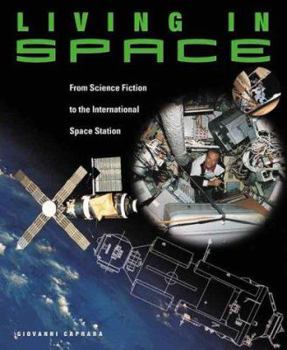Living in Space: From Science Fiction to the International Space Station
This book traces the history of living in space through science fiction through to science fact and give the full story of the successes and disasters that marked the way. It looks at what living in... This description may be from another edition of this product.
Format:Paperback
Language:English
ISBN:1552095495
ISBN13:9781552095492
Release Date:October 2000
Publisher:Firefly Books
Length:216 Pages
Weight:2.45 lbs.
Dimensions:1.1" x 9.1" x 11.0"
Customer Reviews
1 rating
Excellent book on a neglected part of the space program
Published by Thriftbooks.com User , 22 years ago
There are many books about the moon landings but only a handful about a different aspect of the manned space program, the effort to put a long-term human presence into orbit. This book is therefore a welcome addition.It begins with science fiction and speculation: Edward Everett Hale's (author of "The Man Without a Country") "Brick Moon," about a round, masonry space station is the science fiction. The speculation involves the "big three" of early astronautics: Konstantin Tsiolkovsky, Hermann Oberth, and Robert Goddard. The first two speculated in detail about the possibility, benefits, and technology of space stations, while Goddard did the engineering to help make them possible. Two unfamiliar (to me) names also appear: Baron Guido von Pirquet, who published articles describing space station design in the German Rocketry Society's newsletter, and Hermann Noordung, who published a book with more than a hundred engineering drawings of a proposed space station. And the groundwork would not be complete without a mention of von Braun's fifties-era vision as published in Collier's, with dramatic illustrations.The book moves on from there to what has really happened. The first of these chapters focuses on Skylab in some detail but also covers the eventually cancelled Manned Orbiting Laboratory military effort. The Russians deservedly get two chapters, one on Mir's predecessors, the Salyut series, and one on Mir itself. The International Space Station also gets two chapters, one on all the permutations it has gone through and one on how it turned out once it truly became "International." A short final chapter addresses colonies in space, focusing on Gerard K. O'Neill's visionary concepts.These chapters are very detailed and sumptuously illustrated, providing details on each mission and what they were intended to accomplish, as well as the design of each space station (with the myriad Soviet Salyuts, this is a significant amount of information). The Russian chapters are particularly good, briefly covering the engineering details as well as the politics behind them (as two rival factions in the Soviet space establishment strive to impose their vision on a Soviet manned presence in space). The ISS chapters are somewhat depressing, pointing up how much money was spent before anything was built and how much the actual cost has exceeded the estimates. However, the illustrations are particularly good for the ISS, showing it in great detail as it is planned to be built as well as the many discarded permutations.All in all, this is an excellent book for those interested in the subject.






